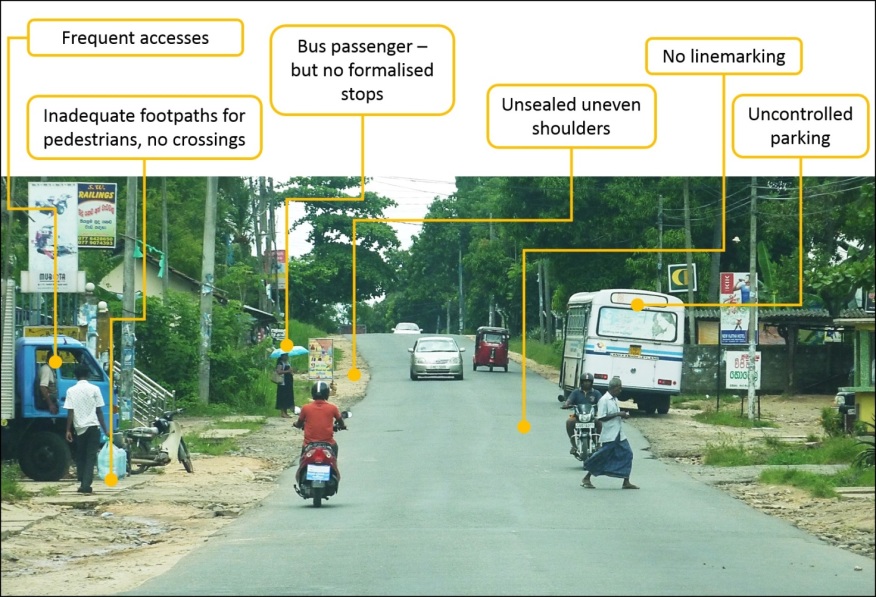
Road Safety Manual
A manual for practitioners and decision makers
on implementing safe system infrastructure!

Road Safety Manual
A manual for practitioners and decision makers
on implementing safe system infrastructure!
A regular assessment of a country’s road safety management system is appropriate to consider the achieved results, the scope and quality of applied interventions, and the efficiency of institutional management capacity. Results will reflect the interventions introduced and the effectiveness of that set of interventions, as determined by the extent of critical supporting systems in place. This will include the commitment to funding; the extent of relevant legislation; and the level of deterrence in place, including enforcement and justice system support.
Source: PIARC (2012).
Key questions that need to be considered are:
Identifying Existing Network-level Crash Risks
Capacity to identify network-level crash risks is critically important. Countries face a variety of road safety challenges on their networks. HICs have high light passenger vehicle motorisation rates, while LMICs usually experience high two-wheeler motorisation rates, high roadside pedestrian volumes, and high proportions of heavy vehicles (trucks and buses) in the vehicle fleet.
Issues influencing comparative crash risks on networks in different countries include:
the levels of safe infrastructure provision | the mix of vehicle types using the network | the controls on drivers and vehicles entering and remaining on the network |
the safety levels of the vehicle fleet | the levels of road user compliance with the laws and road rules (respect for the rule of law) | the emergency medical management of crash victims |
Understanding the relationships between road safety performance and road safety conditions is a critical requirement for assessing underlying crash risk on the road network and in taking action to reduce the risks. Relevant aspects could be
An understanding of the scale of existing problems in a country requires availability of relevant data. A lack of data makes it difficult to have a consistent evidence-based approach to identify problems and implement specific countermeasures. Furthermore, good data systems are essential to measure the outcomes of implemented interventions. The value of extensive and accurate data being available has been demonstrated in Analysis and Use of Data to Improve Safety.
Examples for the assessment of relationships between road safety performance and road safety considerations are two European studies – SUNflower and SUNflower +6 – that provided insights into this relationship in various European countries (see Box 6.2).
The SUNflower study covered Sweden, UK and Netherlands. For these countries, relationships for safety performance and underlying conditions were assessed, e.g.
The assessment lead to factors that may have contributed to differences between road users or road types and between the countries. Many of the report recommendations have been implemented in the three countries, with positive results achieved.
The SUNflower +6 study additionally covered the Central European Countries Czech Republic, Hungary, Slovenia, and the South-European Countries Greece, Portugal and Spain.
Development of road safety in the three Central European countries varied considerably. Results reflected differences in national road safety management and enforcement strategies. In the South-European countries, vertical coordination of safety activities from central and regional to the local level was not well-developed. For some countries the identified changes were related to political changes (e.g. Portugal, Hungary, and the Czech Republic). Generally, an increase in motorized traffic resulted in a growing number of casualties. These growing numbers lead to increased attention on road safety, leading to new road safety policies and organizational measures and safety measures in the countries analyzed.
Source: Koornstra et. al., 2002; SWOV, 2005
Indications of the challenges faced in understanding network-level crash risks as illustrated in Figure 6.2.

This is just one example demonstrating the inherently unsafe condition of infrastructural conditions. In this case, the unrestricted access to the road from the roadside, and the overall poor level of management of road safety on this section of the road network poses risks. It is a situation which occurs in many countries across the world.